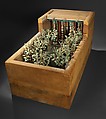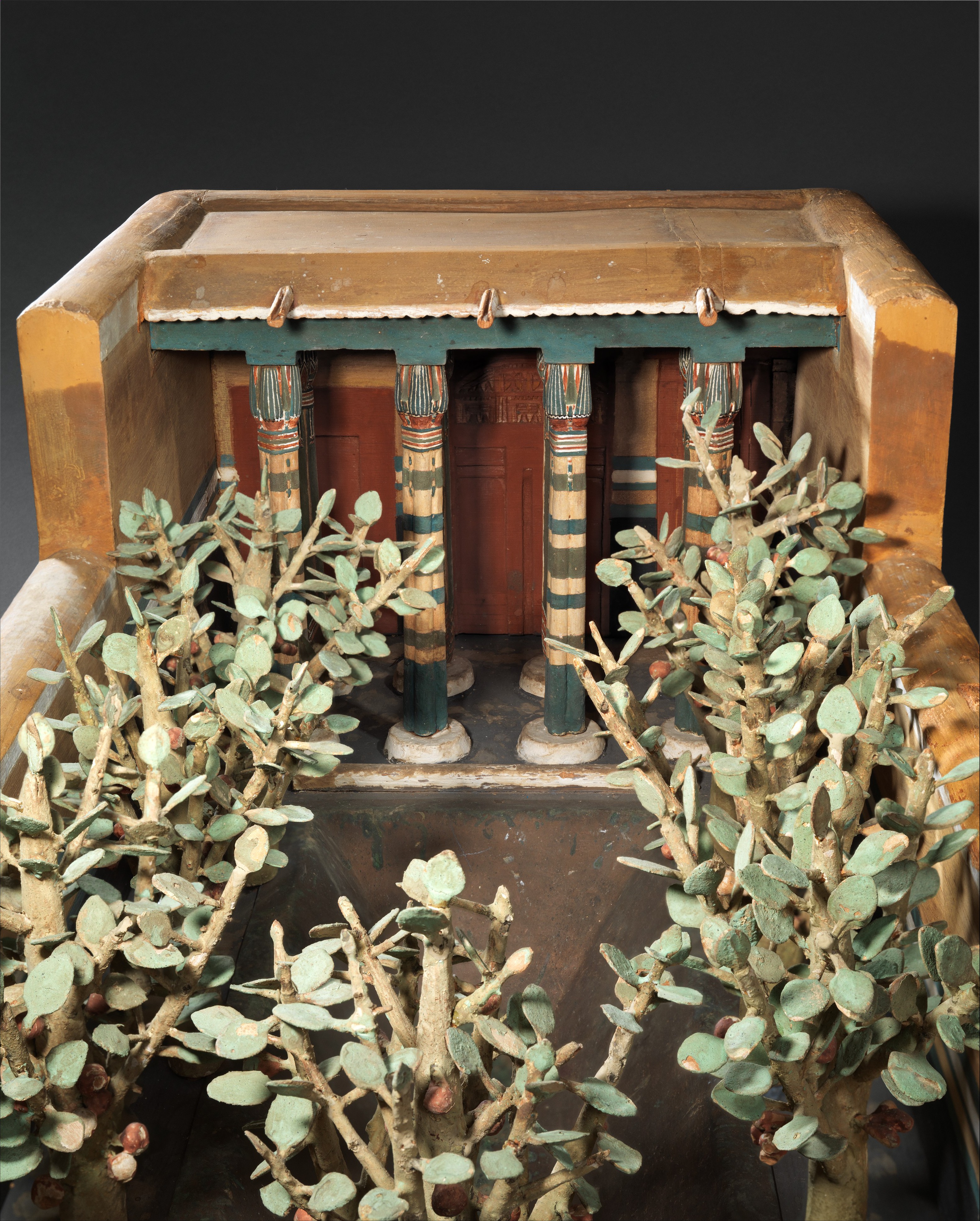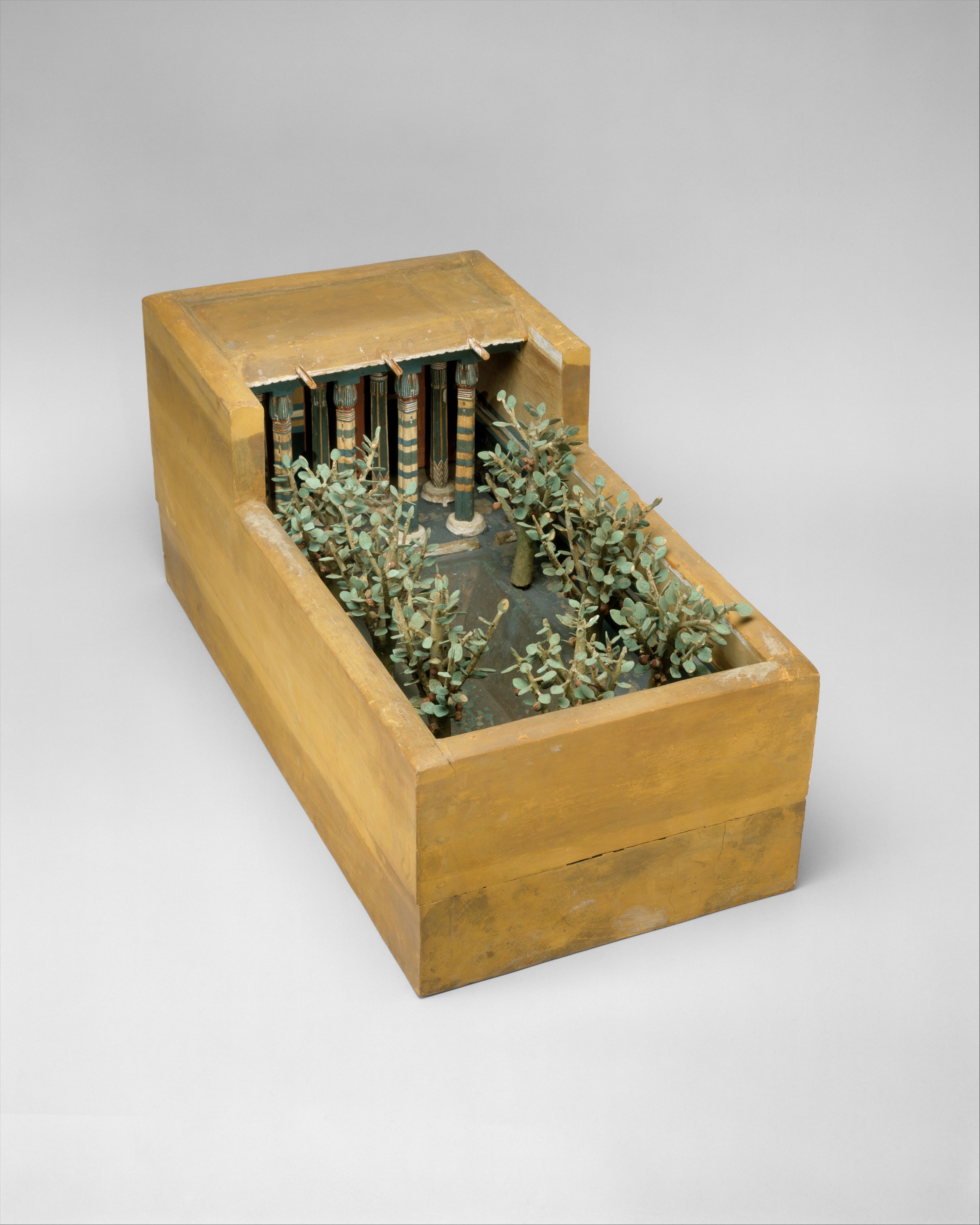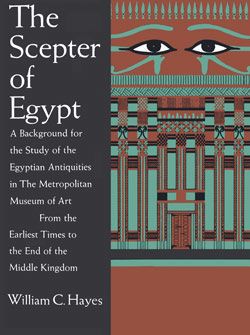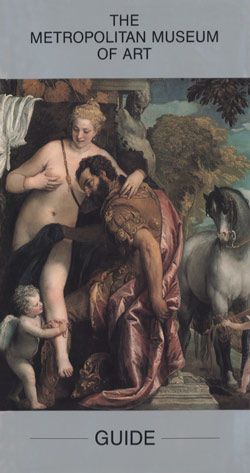Model of a Porch and Garden
Middle Kingdom
This model of a garden and portico was discovered in a hidden chamber at the side of the passage leading into the rock cut tomb of the royal chief steward Meketre, who began his career under King Nebhepetre Mentuhotep II of Dynasty 11 and continued to serve successive kings into the early years of Dynasty 12.
In the center of the garden is a pond surrounded by sycamore fig trees with red fruit growing from the trunks and branches. The pond is lined with copper and could have been filled with water. Facing the garden is the porch of a house. Two rows of columns support the roof made of palm trunks split into halves. The rear columns have capitals in the form of papyrus stalks bound together, the capitals of the front columns imitate bundles of lotus. Rainfall is rare in Upper Egypt, but such an eventuality is provided for in three projecting spouts. At the back of the portico are two doors and a latticed window. These are depicted in more detail also on the outside of the model. The garden model is in essence a libation basin (the pool) with associated vegetation and architecture. There may be links with the so-called "soul houses," clay models of houses with representations of offerings in the forecourts.
All the accessible rooms in the tomb of Meketre had been robbed and plundered already during Antiquity; but early in 1920 the Museum's excavator, Herbert Winlock, wanted to obtain an accurate floor plan of the tomb's layout for his map of the Eleventh Dynasty necropolis at Thebes and, therefore, had his workmen clean out the accumulated debris. It was during this cleaning operation that the small hidden chamber was discovered, filled with twenty-four almost perfectly preserved models. Eventually, half of these went to the Egyptian Museum, Cairo, and the other half came to the Metropolitan Museum in the partition of finds.
Due to rights restrictions, this image cannot be enlarged, viewed at full screen, or downloaded.
This artwork is meant to be viewed from right to left. Scroll left to view more.
